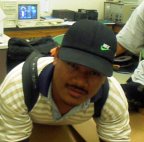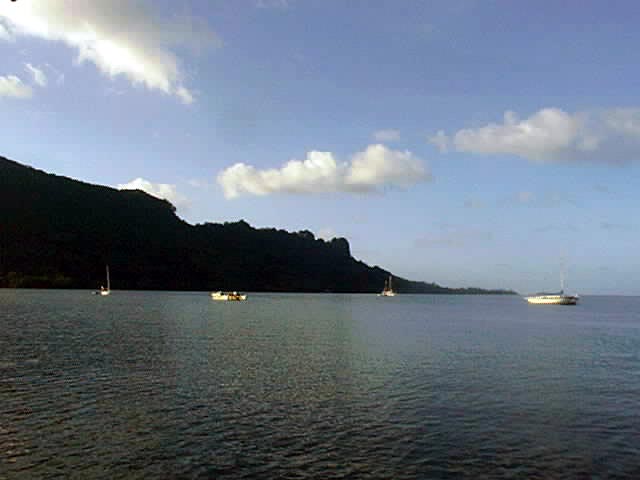 |
 |
Hi! My name is Lee-Roy Ittu. I'm from Kosrae. I am a third-year student at the College of Micronesia-FSM ( Federated States of Micronesia). I had heard a lot of people, especially people in the big continents who really don't know what the word, Micronesia or FSM stand for. Well, this webpage is designed mainly to introduce more about me and my nation -FSM. I feel proud to be a citizen born in this nation and my major goal here is to expose more about my country or nation to the outside world.
There are four states in the FSM. ( Kosrae, Pohnpei, Chuuk, and Yap )
 |
 |
As a person born in the FSM, I believe that our nation is not small. Micronesia is only a name used by early European explorers who believed that they were the ones who discovered the islands on the southern part of the Pacific. Actually, our ancestors did. These outsiders called our nation as Micronesia meaning, group of small islands. Well, it is true that the islands in Micronesia are small in their land masses, but the islands are not the only homes for the Pacific islanders in Micronesia. Same as in Melanesia, Polynesia, and Indonesia ,our ancestors used to travel from one island to another, thus expanding their world, meaning, the whole vast Pacific is their home.
In the earlier past, when outside contact was not yet in progress, Micronesia was a place with no territorial borders. All that could be seen were many tiny scattered islands surrounded by a huge body of water which is the Pacific Ocean.
Our ancestors stayed in these islands, but eventually, they moved from one island to another in the hope of expanding their world. They travel in numbers or in pairs, following sea birds, sea turtles, and using their great navigational skills to equip their outrigger canoes to their major destinations. They are good navigators with significant reading memories of the various constellations we had on the sky, the clouds, the north star and other stars, the underwater sea reefs, the shape of waves, and the feel of the waves hitting their outrigger canoes. These people were smart and they had learned to live in harmony with the mother of nature during their time.
When the Europeans first came to Micronesia, they were very amazed with the beautiness of these islands and the attractiveness of the many existing cultures on these islands. Each island had its own inhabitants who were classified as Austronesians during the early period of exploration.
Anyway, the first contact with the Europeans and the Micronesians was taken place in Guam where Ferdinand Magellan gave the Pacific Islanders a bad reputation. He called Guam as Islas de Ladrones which is a Spanish word, meaning Islands of thieves, just because the islanders had stolen some items from his ship. With the result, he took his crew to the shore and massacred some of the villagers and burning their village. They also ripped off some of the dead corpses that they slaughtered and took out their intestines as a cure for scurvy for the sailors.
And then, the next contact was taken at Ulithi,one of the atoll islands in Yap. The encounter was pretty much peaceful than the one in Guam.
Later on, more and more European traders, whalers, explorers, missionaries, blackbirders, beachcombers, and other groups of people with different races came to Micronesia.
The traders who came to Micronesia in the early 1700's were there mainly to get resources out from Micronesia that they might be able to exchange in China. They came and they collected lots of sea turtle shells, copra, sea cucumbers and others. The reason why they really wanted these resources was because they wanted to get silks and spices like nutmeg, ginger, cinamon, cloves, and etc from China. They had learned to force themselves into trading with the Chinese, although, the Chinese did not want anything from the Europeans. They look at it as the only way to get in touch with the China trading network by getting something that the Chinese might be interested in buying from them.
The whalers at one hand came to the islands in Micronesia just to get whales. That time there were great numbers of sperm-whales in Micronesia. In Kosrae and Pohnpei, many whalers came there and they also used the islands as places to rest and also to find food,water,women, and entertainments. Whale oil is what most Europeans used back then and its demand grew higher and higher that more whalers had to come to the Pacific islands, especially in Micronesia, to get more sperm whales.
Some early Europeans who came to Micronesia in the pre-contact era were just explorers. They came to explore the islands and claimed them for their country and for their colonial territories. Some explorers were great scientists who studied plants and animals species that they might share with the rest of the world who were more curious about what was beyond the horizon. Some are exploring the islands just for the sake of adventures.
Missionaries also came to Micronesia just to impose religions on the islands. The Protestant Missionaries came to the Micronesians islands like Kosrae, Pohnpei, and Chuuk. The Catholic missionaries came to islands in Micronesia like Saipan, Guam, Palua, and Yap. Together, these missionaries had given a lot of support and help to the islanders by providing medical supplies and medical cares for the islanders who caught the white mans' diseases and also, they established public schools for the islanders.
Beside these groups of people who came to the islands in Micronesia, there were also people who were called the beachcombers. The beachcombers were usually referred to the white men or the Europeans who got shipwrecked on the island reefs or got hit by typhoons, which then caused them to ended up staying in these islands. Some beachcombers were there because they were deserted by their captain or they were banished by the ship captain. In some stories, there were pirates and mutineers on the ship who sometimes forced the ship captains out from the ships.
There were also blackbirders who came to the islands in Micronesia during the contact eras. The blackbirders were usually people that came to the islands to do business on slavery. They got as many islanders as they wanted and transported these people to other faraway countries outside Micronesia.
Later on, more and more outsiders came to Micronesia . Ruling countries such as Spain, Germany, Japan, and the U.S. had brought great influences over the lifestyles of the Micronesian people. We can still see how these foreign powers affect the culture of the Micronesians today. Among all those four foreign powers, the U.S. has the largest influences over the Micronesian islands. After the world war II, when the Japanese were expelled from its Pacific territories, the U.S. took over Micronesia and started what they called the Naval Administration of the Pacific Islands. In this government, their major goal was to help the native people of Micronesia after the disasters from the World War II. They were very successful and the islands were soon recovered from the disasters that struck them after the great World War II.
Soon the government was changed into a different kind of government which they called it the Trust Territory of the Pacific Islands. The Republic of the Marshalls, the Commonwealth of the Northern Mariana Islands, the Republic of Palau, and Kosrae, Pohnpei, Chuuk, and Yap states are all territories under the Trust Territory of the Pacific Islands. As some of the territories withdraw themselves from the T.T.P.I. , there were only 4 territories left behind. They are Kosrae, Pohnpei, Chuuk, and Yap.
As a result, they joined themselves together and formed the FSM- the Federated States of Micronesia. The FSM has a political status with the U.S. which is called the "Compact of Free Association" . Under this agreement, the FSM citizens are free to go to the U.S. and the U.S. citizens are free to come to the FSM. Beside this agreement, the FSM national government is recieving compact fund.
This webpage is linked to other websites and you can learn more about Micronesia by clicking at the following websites:
See COM-fSM
See also Micronesian Islands
See also Yap
Click here to see Pohnpei
Click here to see more information about Micronesia.